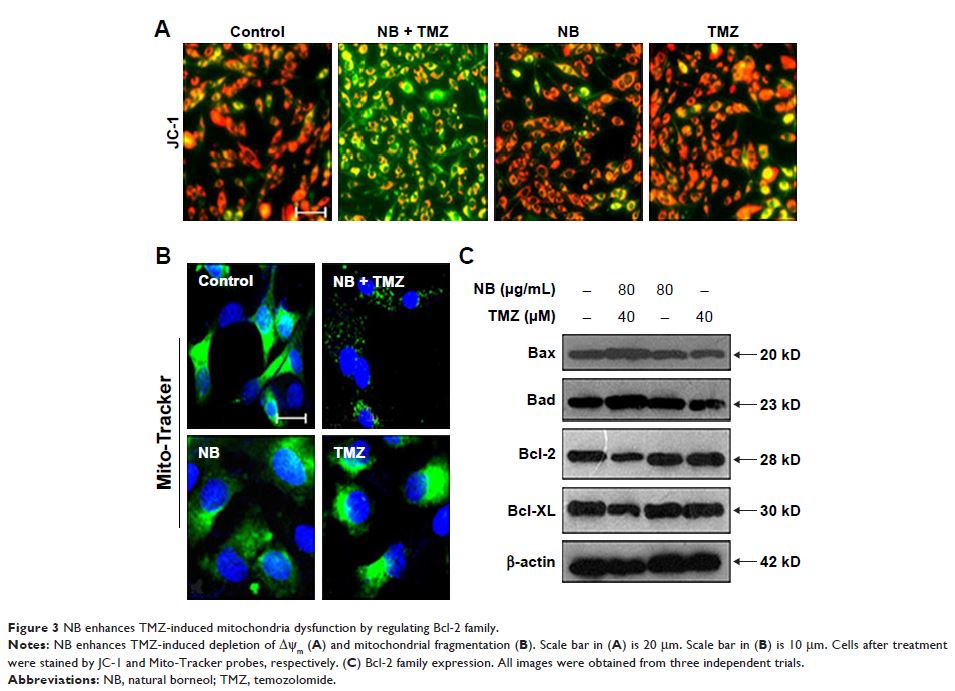9 0 6 7 6
论文已发表
注册即可获取德孚的最新动态
IF 收录期刊
- 2.6 Breast Cancer (Dove Med Press)
- 3.9 Clin Epidemiol
- 3.3 Cancer Manag Res
- 3.9 Infect Drug Resist
- 3.6 Clin Interv Aging
- 4.8 Drug Des Dev Ther
- 2.8 Int J Chronic Obstr
- 8.0 Int J Nanomed
- 2.3 Int J Women's Health
- 3.2 Neuropsych Dis Treat
- 4.0 OncoTargets Ther
- 2.2 Patient Prefer Adher
- 2.8 Ther Clin Risk Manag
- 2.7 J Pain Res
- 3.3 Diabet Metab Synd Ob
- 4.3 Psychol Res Behav Ma
- 3.4 Nat Sci Sleep
- 1.9 Pharmgenomics Pers Med
- 3.5 Risk Manag Healthc Policy
- 4.5 J Inflamm Res
- 2.3 Int J Gen Med
- 4.1 J Hepatocell Carcinoma
- 3.2 J Asthma Allergy
- 2.3 Clin Cosmet Investig Dermatol
- 3.3 J Multidiscip Healthc

天然冰片是一种新型化学增敏剂,通过触发线粒体功能障碍和活性氧化物物种介导的氧化损伤,增强替莫唑胺诱导的抗癌效率以抗击人体胶质瘤
Authors Liu WJ, Yin YB, Sun JY, Feng S, Ma JK, Fu XY, Hou YJ, Yang MF, Sun BL, Fan CD
Received 17 May 2018
Accepted for publication 17 July 2018
Published 4 September 2018 Volume 2018:11 Pages 5429—5439
DOI https://doi.org/10.2147/OTT.S174498
Checked for plagiarism Yes
Review by Single-blind
Peer reviewers approved by Dr Cristina Weinberg
Peer reviewer comments 4
Editor who approved publication: Dr Tohru Yamada
Background: Temozolomide (TMZ)-based chemotherapy represents an effective way for treating human glioma. However, its clinical application is limited because of its side effects and resistance to standard chemotherapy. Hence, the search for novel chemosensitizers to augment their anticancer efficiency has attracted much attention. Natural borneol (NB) has been identified as a potential chemosensitizer in treating human cancers. However, the synergistic effect and mechanism of NB and TMZ in human glioma have not been investigated yet.
Materials and methods: U251 human glioma cells were cultured, and the cytotoxicity and apoptosis of NB and/or TMZ were examined by MTT assay, flow cytometric analysis and Western blot. Nude mice tumor model was also employed to evaluate the in vivo anticancer effect and mechanism.
Results: The results showed that the combined treatment of NB and TMZ more effectively inhibited human glioma growth via triggering mitochondria-mediated apoptosis in vitro, accompanied by the caspase activation. Combined treatment of NB and TMZ also caused mitochondrial dysfunction through disturbing Bcl-2 family expression. Further investigation revealed that NB enhanced TMZ-induced DNA damage through inducing reactive oxide species (ROS) overproduction. Moreover, glioma tumor xenograft growth in vivo was more effectively inhibited by the combined treatment with NB and TMZ through triggering apoptosis and anti-angiogenesis.
Conclusion: Taken together, our findings validated that the strategy of using NB and TMZ could be a highly efficient way to achieve anticancer synergism.
Keywords: glioma, borneol, temozolomide, DNA damage, apoptosis
